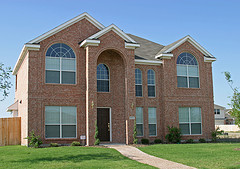 The National Post recently published the third of a four-part series on Daniel McGinn’s book House Lust, titled “The Sociology of the Mega-Home.” McGinn’s book examines the obsession we have with our homes, and draws upon scholarly research related to shared living space of all sizes. This article suggests that personal problems and isolation from other family members is a function of the activities and interactions in the home rather than the square footage of the house.
The National Post recently published the third of a four-part series on Daniel McGinn’s book House Lust, titled “The Sociology of the Mega-Home.” McGinn’s book examines the obsession we have with our homes, and draws upon scholarly research related to shared living space of all sizes. This article suggests that personal problems and isolation from other family members is a function of the activities and interactions in the home rather than the square footage of the house.
“When sociologists have examined house size and family life, they’ve usually focused on the other extreme: the extent to which living in cramped or overcrowded circumstances leads to problems. In fact, research suggests that it does. New York University sociologist Dalton Conley cites studies showing that people who live in homes where the number of rooms is fewer than the number of inhabitants suffer from increased irritability, withdrawal, weariness and poor physical and mental health. Conley’s own research goes even further, suggesting that children who grow up in an overcrowded home tend to suffer in educational attainment, perhaps because they don’t have sufficient space to study or because the crowded conditions affect their sleep.”
…but…
“Kathryn Anthony is an architecture professor at the University of Illinois at Champagne-Urbana. Anthony believes that while people may worry about a family in a 9,000-square-foot home losing touch with one another, it may be just as easy to lose touch in a 1,500-squarefoot home in which each family member plugs into his own iPod while tapping on a wire-less-equipped laptop. ‘These kind of electronic devices allow people to get into their own worlds and really divorce themselves, at least temporarily, from what’s going on,’ Anthony says. It’s no wonder that pediatricians advise parents to keep TVs and computers out of children’s bedrooms.”

Comments